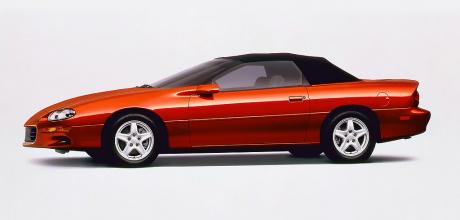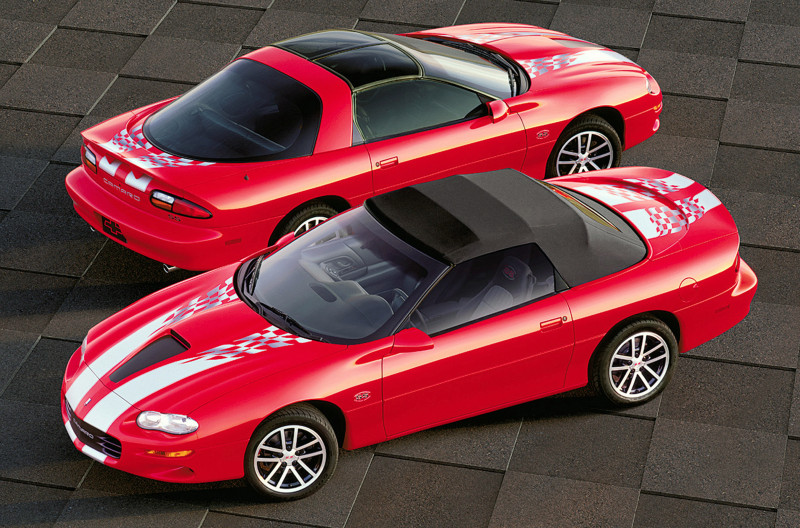The last real motoring era?

Evans discusses whether late-1990s and early-2000s cars and trucks represent the last of their kind...
Acrossthe pond
In conversations I have among industry pundits and fellow enthusiasts, there seems to be more and more talk about classic cars becoming ever more sought after. I think a big reason for that is the current political push towards battery electric vehicles and the fact that today, cars and trucks are becoming more and more homogenised. When I was a kid, I could identify just about every make and model of car on the road, today it really is tough to tell many of them apart. Look, there it goes, another battleship grey or silver crossover utility vehicle, with a gaping grille, high waistline, lower body cladding and roof rails – was it a Honda, a Hyundai, a Chevrolet, or a Ford? Who knows?

I feel it is a bit of a travesty to call these things sport utility vehicles, since they are basically econobox cars on stilts, off-road pretenders with underpowered, overworked engines that will get stuck on anything more challenging than a dirt or gravel road. Sure, there are some true off-roaders still being manufactured and kudos to those OEMs that still do, such as Jeep with its Wrangler and Ford with the Bronco. Nevertheless, there is something decidedly lacking when driving a modern vehicle. Government safety and emissions regulations and a never-ending obsession with adding more and more technology to our vehicles has resulted in a very disconnected and, dare I say, soulless driving experience. By contrast, if you get behind the wheel of something that’s 20 years or older, you enter a different world. There’s an intrinsic analogue charm, even in some late-1990s and early-2000s vehicles that is missing today.
I count cars like the fourth-generation Chevy Camaro and Pontiac Firebird, fifth-generation Chevy Corvette, and of course the fourth-generation Ford Mustang as prime examples. If we look at trucks from the same era, the Ford F-150 Lightning, Chevy Silverado SS and Dodge Dakota R/T were fast and fun haulers, with a character that’s decidedly missing from today’s oversized, electronic-laden Tonka toys. Cars and trucks from the late-1990s/early 2000s are now starting to gain collector interest as their older forebears continue to rise in value (and demand). I would argue that despite their jelly mould styling and acres of plastic inside, vehicles from this era arguably represent the last hurrah of motoring in the pure sense, bridging the gap of automotive tradition with the brave new digital world of the 21st century. Back then, manual gearboxes were still quite readily available on a number of cars and trucks over here, and you could even still get a front bench seat in some American cars, like the Chevrolet Impala, Ford Crown Victoria, Mercury Grand Marquis and Lincoln Town Car. Today, everything seems to have bucket seats and high centre console, whether it’s a car, truck, or SUV, plus when it isn’t truly sporty and the transmission’s automatic, really, what’s the point? Why not have a bench seat instead and make better use of interior storage space? In a way I think it’s a bit sad that cars like the Impala and Crown Vic don’t exist anymore, as their simple ruggedness, spacious, comfortable interiors and reliability made them great buys. Police officers I’ve talked to stateside frequently lament the passing of the Crown Victoria Police Interceptor, which, for years, was the go-to car of choice for law enforcement.
Today, although Ford still offers police package vehicles, a new Explorer, even if it is right-wheel drive again, just isn’t the same. While politicians and environmentalists try to convince us the future lies in battery electric vehicles, I for one, am still very sceptical about this so-called EV revolution, particularly as more and more cracks start to appear in the zero emissions utopian dream, such as inadequate charging, cost of manufacturing, ownership and repair of EVs, as well as a lack of raw materials to produce an adequate supply of batteries. There is a good chance that automotive trends will shift once again, and I personally wouldn’t rule out internal combustion engines just yet. Nonetheless, as time goes by, I feel nostalgia for 20th century motoring will only continue to grow. So, if you haven’t snapped up a vehicle from the late-1990s and early 2000s yet and have considered doing so, perhaps now is the time to get your hands on one. There are still enough of them out there.

